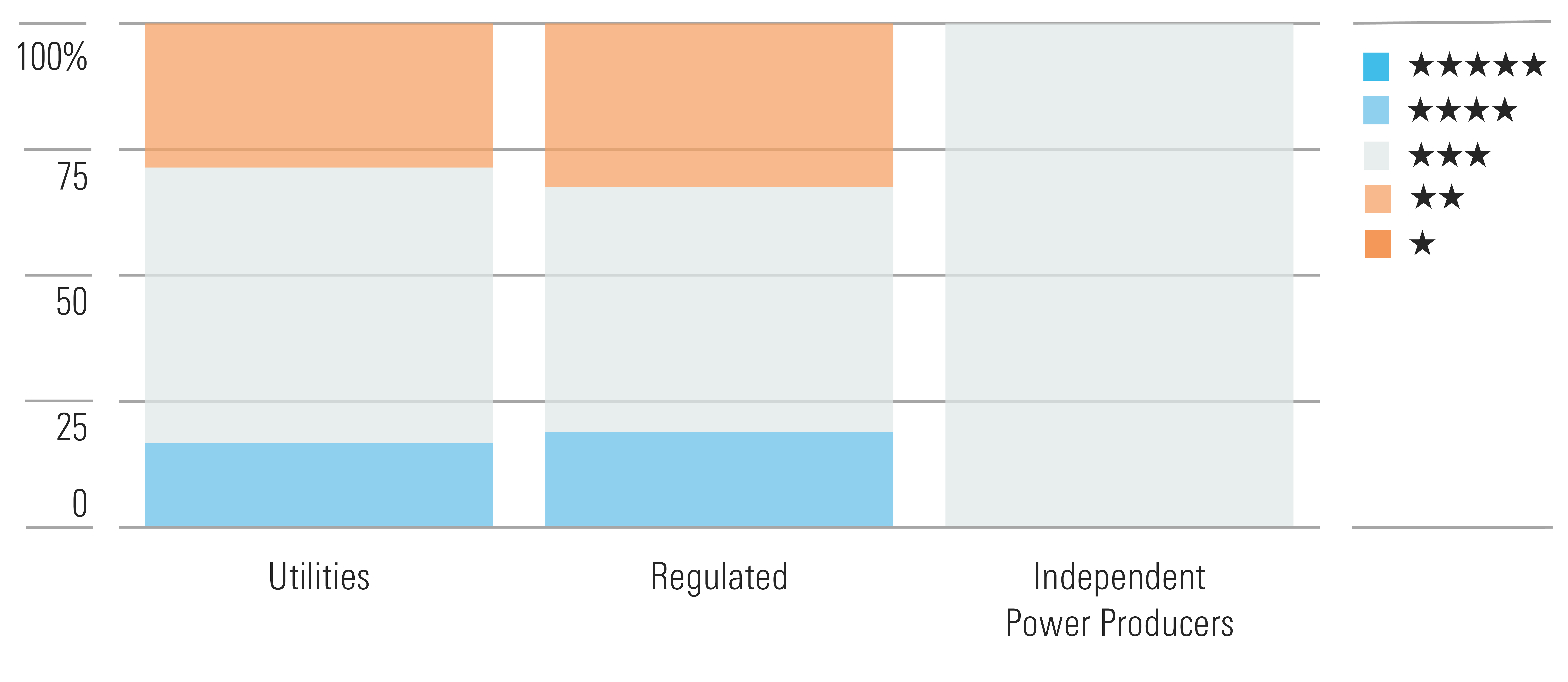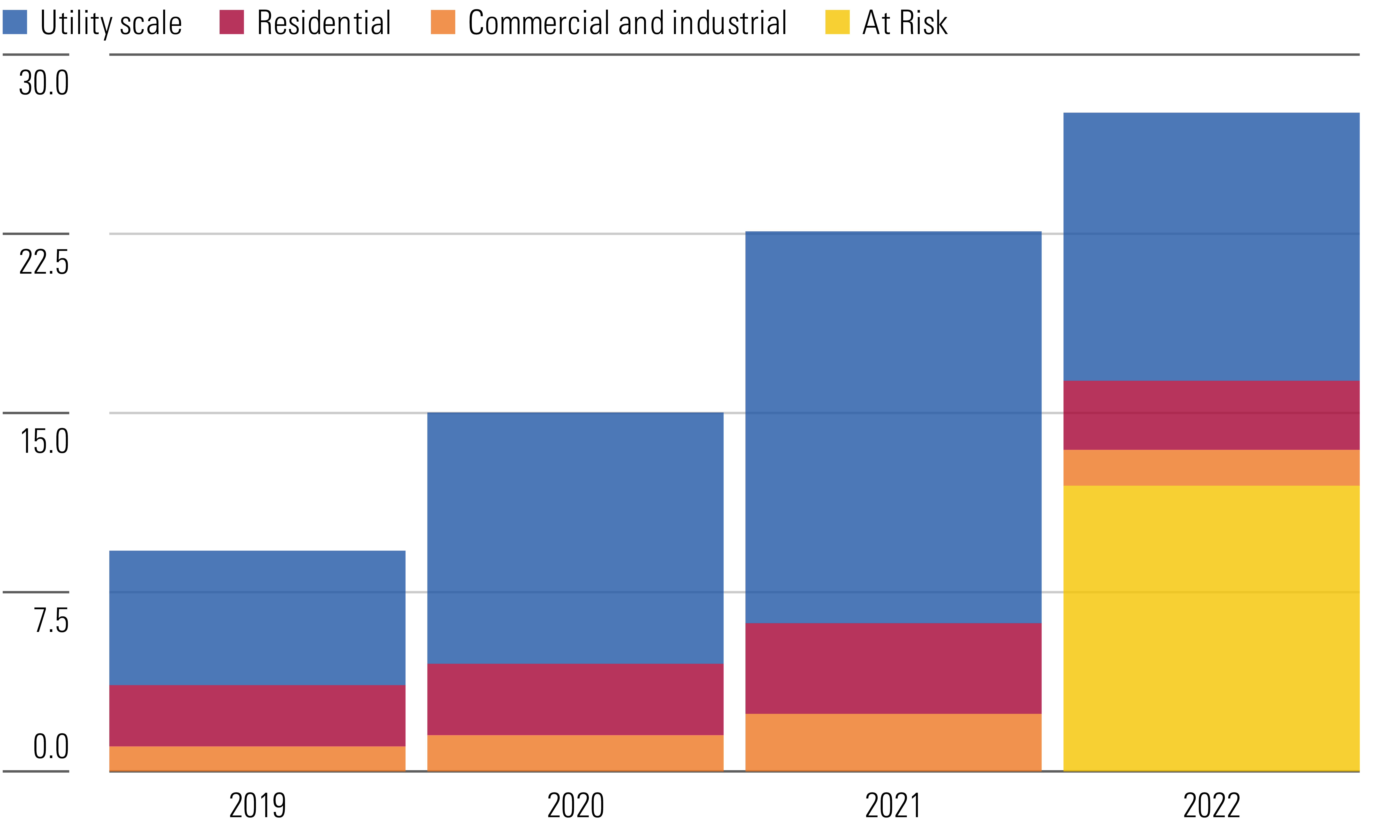As Long as Inflation Worries Persist, We Expect Utilities to Underperform
Renewable energy continues to be a long-term boon for the sector.
For most of 2022, investors have flocked to utilities as one of the few areas of the market to protect against recession fears and ongoing geopolitical uncertainty. Utilities were the only sector besides energy with positive returns through May.
As Inflation Worries Returned, Utilities Took a Nosedive

- Source: Rystad, Morningstar Equity Research. Data as of June 24, 2022.
Utilities’ outperformance has papered over what we consider the sector’s biggest long-term risk: inflation. As soon as inflation hit the headlines again in mid-June, utilities took a nosedive. The Morningstar US Utilities Sector Index fell 12% in the week after the U.S. Bureau of Labor Statistics reported 8.6% core inflation in May, a four-decade high.
Some Utilities Have Attractive Valuations After Pullback

- Source: Rystad, Morningstar Equity Research. Data as of June 24, 2022.
We expect this seesaw for utilities to continue throughout 2022 as investors alternately worry about a recession (a positive for utilities) and inflation (a negative for utilities). None of the 39 North American utilities we cover was trading below our fair value estimate as of early June. Now, after the late-June pullback, nearly half our utility coverage trades at or below our fair value estimates. Still, the sector is less attractive from a valuation perspective than the total market, which we consider undervalued.
As long as inflation remains the market’s top concern, we expect utilities to underperform. Utilities are the most sensitive to inflation because of their mostly fixed revenue, large capital investment budgets, and borrowing needs. We think long-term investors who want utilities in their portfolios should focus on those in constructive regulatory environments with the most protection from inflation.
Rising Interest Rates Have Erased Utilities’ Dividend Yield Premium

- Source: Rystad, Morningstar Equity Research. Data as of June 24, 2022.
Inflation, and the related jump in interest rates, has eroded utilities’ once-attractive dividend yields. The sector’s median 3.1% dividend yield is now lower than the 10-year U.S. Treasury yield for the first time since 2008. This is an abrupt turn. In early March, utilities’ median dividend yield was a 150-basis-point premium to the 10-year U.S. Treasury.
Renewable energy growth remains a long-term tailwind for utilities, supporting our 5%-7% annual earnings and dividend growth outlook for most of the sector. However, supply costs for solar and wind projects are rising. We think utilities with the most aggressive growth plans might turn more cautious as they try to limit customer bill increases while still pursuing clean energy targets.
Federal Policy Uncertainty Risks Delays to Solar Installations

- Source: Rystad, Morningstar Equity Research. Data as of June 24, 2022.
Top Picks
Edison International EIX Star Rating: ★★★★ Economic Moat Rating: Narrow Fair Value Estimate: $71 Fair Value Uncertainty: Medium
Edison continues to trade at a sizable discount to its peers despite a growth outlook, 4% dividend yield, and clean energy profile that tops most other U.S. utilities. California’s progressive energy policies and utility rate regulation support Edison’s $6 billion annual investment plan to harden the grid against natural disasters, integrate renewable energy, and support electric vehicle adoption. We forecast 6% annual earnings growth for at least the next five years and similar dividend growth. Edison is one of the few pure-play electric utilities that owns no power generation and has no direct fossil fuel exposure.
Entergy ETR Star Rating: ★★★★ Economic Moat Rating: Narrow Fair Value Estimate: $115 Fair Value Uncertainty: Low
We think Entergy has several advantages over its peers in an inflationary environment. The company's Southeast utilities should benefit from a jump in U.S. energy demand, constructive state regulation, and substantial opportunities for clean energy growth. More than 90% of Entergy's investments flow through customer rates with little regulatory lag. This minimizes the impact from inflation. We expect Entergy to invest $18 billion in 2022-25 to upgrade its expansive grid and add renewable energy. This supports our annual earnings growth estimate in line with management's 6%-8% target.
Dominion Energy D Star Rating: ★★★★★ Economic Moat Rating: Wide Fair Value Estimate: $82 Fair Value Uncertainty: Low
Dominion has transitioned to a predominantly rate-regulated utility operating in highly constructive regulatory environments. The company's five-year $37 billion capital investment plan focusing on clean energy supports our 6.5% annual earnings growth forecast. Virginia is the company's most important subsidiary and has the most constructive regulation. Dominion expects 90% of its capital investment in the region will be eligible for rate riders, reducing regulatory risk in an inflationary environment.

/s3.amazonaws.com/arc-authors/morningstar/ea0fcfae-4dcd-4aff-b606-7b0799c93519.jpg)
/cloudfront-us-east-1.images.arcpublishing.com/morningstar/G3DCA6SF2FAR5PKHPEXOIB6CWQ.jpg)
/cloudfront-us-east-1.images.arcpublishing.com/morningstar/VUWQI723Q5E43P5QRTRHGLJ7TI.png)
/cloudfront-us-east-1.images.arcpublishing.com/morningstar/XLSY65MOPVF3FIKU6E2FHF4GXE.png)
:quality(80)/s3.amazonaws.com/arc-authors/morningstar/ea0fcfae-4dcd-4aff-b606-7b0799c93519.jpg)